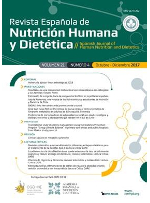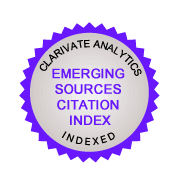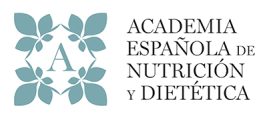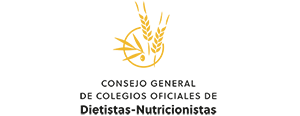Psychological and Nutritional Intervention in Mexican Youths: Eating Behavior, Anthropometric Indicators and Attitudes Towards Appearance, A Pre-Experimental Study
DOI:
https://doi.org/10.14306/renhyd.29.1.2296Keywords:
Obesity, Body composition, Nutritional intervention, Psychological intervention, workshopAbstract
Introduction. Excess weight represents a risk for physical and mental health. The objective was to determine the effectiveness of a psychological and nutritional intervention in workshop format to improve body indicators, eating behavior and attitudes about appearance in young university students.
Methods. A preexperimental study was conducted with pre and post intervention evaluation of educational workshops in psychology and nutrition, with follow-up at 6 months, in 54 university students, 31.5% men and 68.5% women, aged between 18 and 27 years (X̅ = 20.72; SD = 2.04). The CARME and SATAQ-4 questionnaires and anthropometric evaluation were used.
Results. Women had higher percentage of fat mass, emotional eating, internalization of thinness and media pressure than men, as well as lower body water percentage and muscle internalization. Body indicators showed sex-differentiated relationships with excess malnutrition risk eating behaviors and attitudes about appearance. After the intervention, in women there was a decrease in BMI and CTI, response to food, emotional eating, internalization of the ideal of thinness and family pressure. In men, there was a decrease in food response, consumption of high-calorie foods and internalization of the thin ideal.
Conclusions. Psychological and nutritional intervention improved some body indicators and eating behaviors that predispose to the development of malnutrition due to excess, while improving attitudes about appearance.
References
PAHO. ENLACE: Portal de Datos Sobre Enfermedades No Transmisibles, Salud Mental y Causas Externas Sobrepeso y Obesidad. 2022. Available from: https://www.paho.org/en/enlace/overweight-and-obesity.
Instituto Nacional de Salus Pública. Encuesta Nacional de Salud y Nutrición 2020 Sobre Covid-19 Resultados Nacionales. México; 2020.
del Moral-Trinidad LE, Romo-González T, Carmona Figueroa YP, et al. Potential for body mass index as a tool to estimate body fat in young people. Enferm Clin 2021;31(2):99–106; doi: 10.1016/j.enfcli.2020.06.080.
Organización Mundial de la Salud. Obesidad y Sobrepeso. 2020. Available from: https://www.who.int/es/news-room/fact-sheets/detail/obesity-and-overweight.
Pérez AMP. Rol de la emoción en la conducta alimentaria. Rev Chil Nutr 2020;47(2):286–291; doi: 10.4067/S0717-75182020000200286.
Carrasco-Marín F, Pérez-Villalobos C, Cruzat-Mandich C. Cuestionario para medir conductas alimentarias de riesgo de malnutrición por exceso en adolescentes. Nutr. Hosp 2020;37(1):37–45; doi: 10.20960/nh.02666.
Cascales JÁM. Body image: Reality, perception and desire, and his relationship with his multi-dimensional evaluation and muscular motivation. Psychol. soc. educ. 2018;10(3):25–263; doi: 10.25115/psye.v10i1.2134.
Garrido Porras A, Flores Muñoz M, Espinosa Almendro JM. Una Alianza Para Una Visión Positiva y Saludable de La Imagen Personal. Junta de Andalucía, Consejería de Salud. España; 2016.
Escandón-Nagel N, Larenas-Said J. Actitudes antiobesidad, sintomatología alimentaria y significados asociados a la obesidad en estudiantes universitarios vinculados al área de la salud. Nutr Hosp 2020;37(2):285–292; doi: 10.20960/NH.02791.
Díaz Gutiérrez MC, Bilbao y Morcellea GM, Unikel Santoncinib C, et al. Relación entre estatus nutricional, insatisfacción corporal y conductas alimentarias de riesgo en estudiantes de nutrición. Rev Mex Trastor Aliment 2019;10(1):53–65; doi: DOI: http://dx.doi.org/10.22201/fesi.20071523e.2019.1.490.
Sánchez V, Aguilar A, González F, et al. Evolución en los conocimientos sobre alimentación: Una intervención educativa en estudiantes universitarios. Rev Chil Nutr 2017;44(1):19–27; doi: 10.4067/S0717-75182017000100003.
Castillo I, Solano S, Sepúlveda AR. Programa de Prevención de Alteraciones Alimentarias y Obesidad En Estudiantes Universitarios Mexicanos. Behav Psychol 2016;24:5–28.
Castillo R, Martínez G, Rodríguez M, et al. Intervención educativa en orientación alimentaria en jóvenes de 18 a 29 años en la Facultad de Medicina de la Universidad Autónoma de Nuevo León. Rev.CES Salud Pública 2016;7(2):2.
Anastacio-Landa F, Dominguez-Lara S, Romo-González T, et al. Validación del Cuestionario para medir conductas alimentarias de riesgo de malnutrición por exceso en universitarios mexicanos. Nutr. clín. diet. hosp 2022;42(4):108–116; doi: 10.12873/424campos.
Villegas Moreno MJ, Londoño Pérez C, Pardo Adames C. Validación del Cuestionario de Actitudes Socioculturales sobre la Apariencia (SATAQ-4) en población colombiana. Acta colomb. psicol. 2021;24(1):86–95; doi: https://www.doi.org/10.14718/ACP.2021.24.1.8.
Sociedad Internacional para el Avance de la Cineantropometría. Normas Internacionales Para La Valoración Antropométrica. Sociedad Internacional para el Avance de la Cineantropometría: Sudáfrica; 2001.
Schaefer LM, Burke NL, Thompson JK, et al. Development and validation of the sociocultural attitudes towards appearance questionnaire-4 (SATAQ-4). Psychol Assess 2015;27(1):54–67; doi: 10.1037/a0037917.
Dominguez-Lara S. Magnitud del efecto, una guía rápida. Educación Médica 2018;19(4):251–254; doi: 10.1016/J.EDUMED.2017.07.002.
Guzmán-Acuña J, Salazar-Rocha K. Presión sociocultural hacia la imagen corporal de la mujer y cómo afecta el desempeño académico. Revista Internacional de Ciencias Sociales y Humanidades, SOCIOTAM 2016;XXVI(2):11–41.
Pérez-Lugo L, Gabino-Campos A, Baile I. Analysis of the aesthetic stereotypes of women in nine fashion and beauty mexican magazines. Rev Mex Trastor Aliment 2016;7:40–45; doi: 10.1016/j.rmta.2016.02.001.
Díaz MDPR, Hernández JFL, Ramírez DDV. Conductas Alimentarias de Riesgo y su asociación con el exceso de peso en adolescentes del Istmo de Tehuantepec, Oaxaca: un estudio transversal. Rev Esp Nutr Hum Diet 2020;25(2):246–255; doi: 10.14306/RENHYD.25.2.1170.
Hernández M, Eguilaz R De, Martínez B, et al. Influencia multisensorial sobre la conducta alimentaria: ingesta hedónica. Endocrinol Diabetes Nutr 2018;65(2):114–125.
Sánchez Bizama J, Oda-Montecinos C, Cova Solar F, et al. Estilos de ingesta de estudiantes universitarios chilenos: ¿qué hay de nuevo? Nutr Hosp 2020;37(4); doi: https://dx.doi.org/10.20960/nh.02656.
Zurita-Cruz JN, Márquez-González H, Miranda-Novales G, et al. Estudios experimentales: diseños de investigación para la evaluación de intervenciones en la clínica. Rev Alerg Mex 2018;65(2):178–186; doi: 10.29262/RAM.V65I2.376.
Additional Files
Published
How to Cite
Issue
Section
License
Copyright (c) 2020 Fidelina Anastacio-Landa, Sergio Alexis Dominguez-Lara, Tania Romo-González, Socorro Herrera-Meza, Yolanda Campos-Uscanga

This work is licensed under a Creative Commons Attribution-NonCommercial-ShareAlike 4.0 International License.











